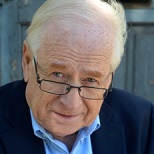 Special to the Philanthropy Journal
Special to the Philanthropy Journal
By William McAndrews
“What keeps you awake at night?”
To this, many nonprofit leaders respond that they wonder whether their organization is structured to maximize potential. For example:
- Do I have the right people in the right place doing the right things at the right time?
- Are there organizational weaknesses that could pose a risk to success and – even more serious – the survival of the organization?
- How can I improve the organization’s performance, especially in a time when the operating environment is changing and resources are dwindling?
 One way to answer these questions is through performing an Organizational Assessment.
One way to answer these questions is through performing an Organizational Assessment.
What is an OA?
An Organizational Assessment (OA) is an integrated, systematic, multi-disciplinary methodology that examines how an organization functions and evaluates the effectiveness of the existing organization. The OA helps the organization take a step back from the day-to-day details to see the bigger picture and how well the organization is delivering on its mission. Often this assessment is the first step in a broader planning or improvement process.
Why Conduct an OA?
A systematic OA process obtains evidence-based information about an organization, which can:
- Identify an organization’s strengths and weaknesses
- Pinpoint areas of competence
- Assess and improve an organization’s performance
- Support the planning and decision-making process
- Indicate areas in need of change
- Restructure decisions
- Uncover potential risks
Who: Internal vs. External
One of the first questions that nonprofit leaders ask when considering an OA is whether to do an internal self-assessment or to hire someone to perform an external assessment.
The best approach really incorporates elements of both.
An internal self-assessment can increase an organization’s ownership of the OA and acceptance of feedback along with commitment to the evaluation’s recommendations. However, an internal self-assessment can cause stakeholders to question the independence or validity of the findings. More important, external stakeholders may fear that hard issues will not be tackled due to potential sensitivities within the organization. So using an external source to lead the process, but working as partners with the organization’s leadership, is the most effective way to uncover real issues and separate them from perceived problems. Real issues can be sensitive, and they are often not surfaced as legitimate issues by an internal OA alone.
How to Conduct an OA?
Recognizing the need to achieve “internal ownership” and “commitment” of the OA, as well as limiting time and associated costs, NESC has developed an OA – Self-Assessment Tool to be utilized in conjunction with an Organizational Assessment project. This tool combines the benefits of a self-assessment with the advantages gained by an external perspective.
The OA Self-Assessment Tool is an assessment document with over one hundred targeted questions that looks at:
Organizational Characteristics ➜ How Things Get Done
Organizational Functions ➜ What People Do
The OA Self-Assessment Tool has been used in a number of projects and has been credited with helping NESC gain acceptance of the OA at the outset of the project, to uncover “hidden” issues, and limit costs and time.
Key Success Factors
Successful OAs share several characteristics:
- Inclusivity: They involve people at all levels of the organization and in both line and staff roles.
- Acceptance: Everyone’s perception is valid in that it reflects their experience within the organization. The slightest hint of criticism or judgment will quash any willingness to participate in an open exploration of issues.
- Constructiveness: An effective OA doesn’t assign blame. The idea is not to point fingers, but rather to take an honest look at the organization’s reality at that juncture. Stakeholders are invited to choose whether to accept this reality or create a different one for the future.
- Broad scope: They scan across the entire organization first, and then look at patterns that emerge before starting to think about solutions. They avoid “quick fixes” that may provide instant gratification but fail to address the root cause of any issues that surface.
Who Benefits the Most from an OA?
Most often, nonprofit organizations that perform an OA are those reaching a turning point in the organization’s history or facing changes driven by external forces. Nonprofit leaders facing challenges like these are interested in assuring the success and, more important, the survival of their organization.
When to do an OA?
Even without external or internal pressures, every nonprofit organization should be periodically analyzed and evaluated to determine whether it is optimally functioning in accordance with its mission.
Times are challenging and there are no “magic bullets”. A well-executed Organizational Assessment can be the one thing to help nonprofit leaders meet organizational challenges head-on and, perhaps, get a good night’s sleep.
William McAndrews is the Senior VP & Regional Director for the National Executive Service Corps (NESC). NESC is a 501(c)3 nonprofit consultancy that in the past three decades has helped the leaders of more than 2,000 nonprofits in metro-New York area with guidance in organizational leadership, strategic and business planning as well as planning implementation, shared services and collaborative efforts.




